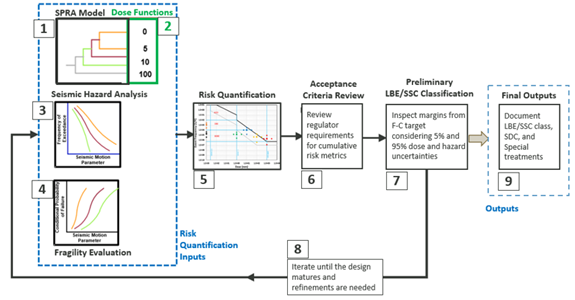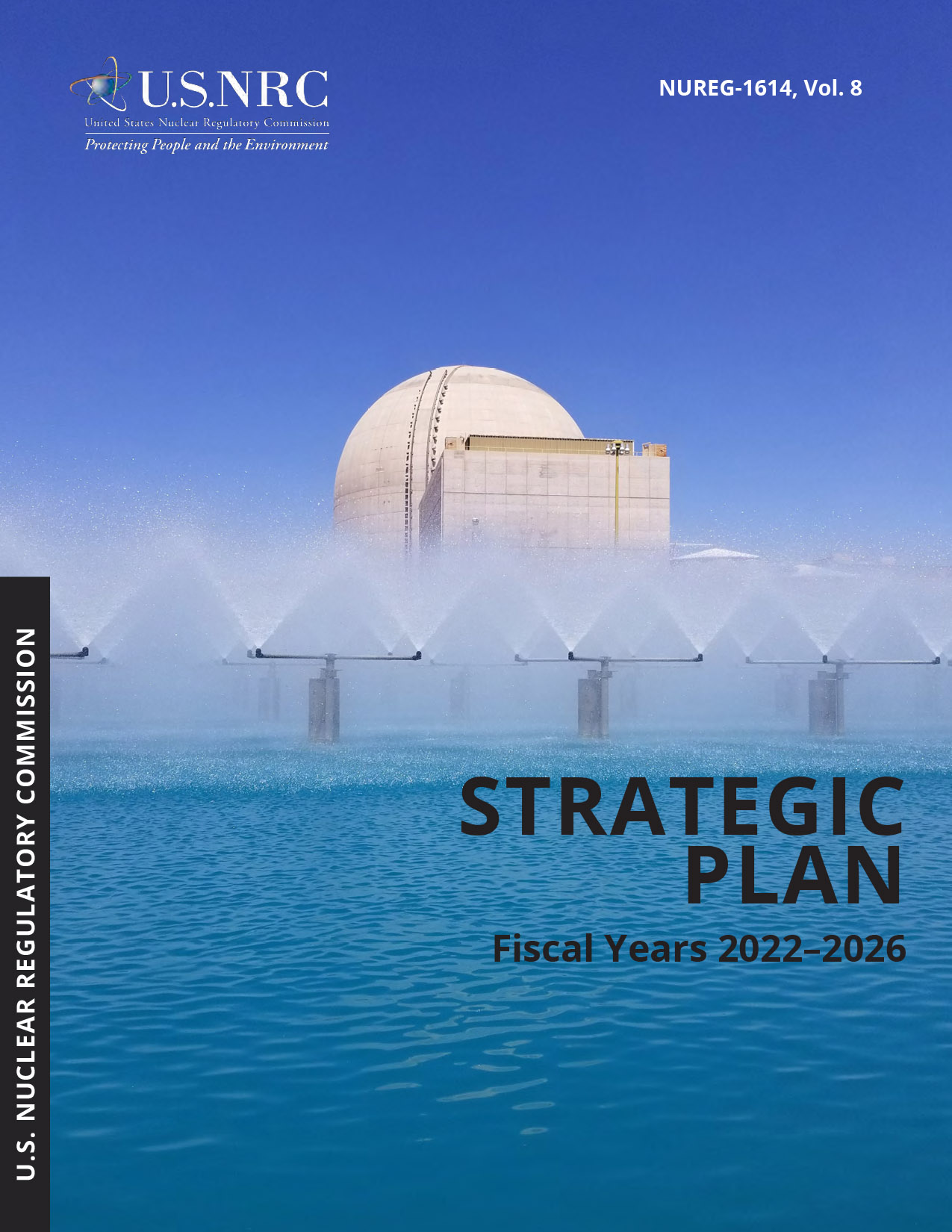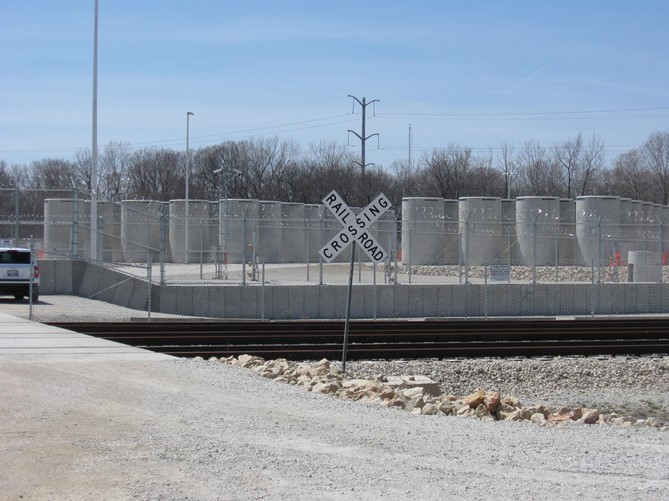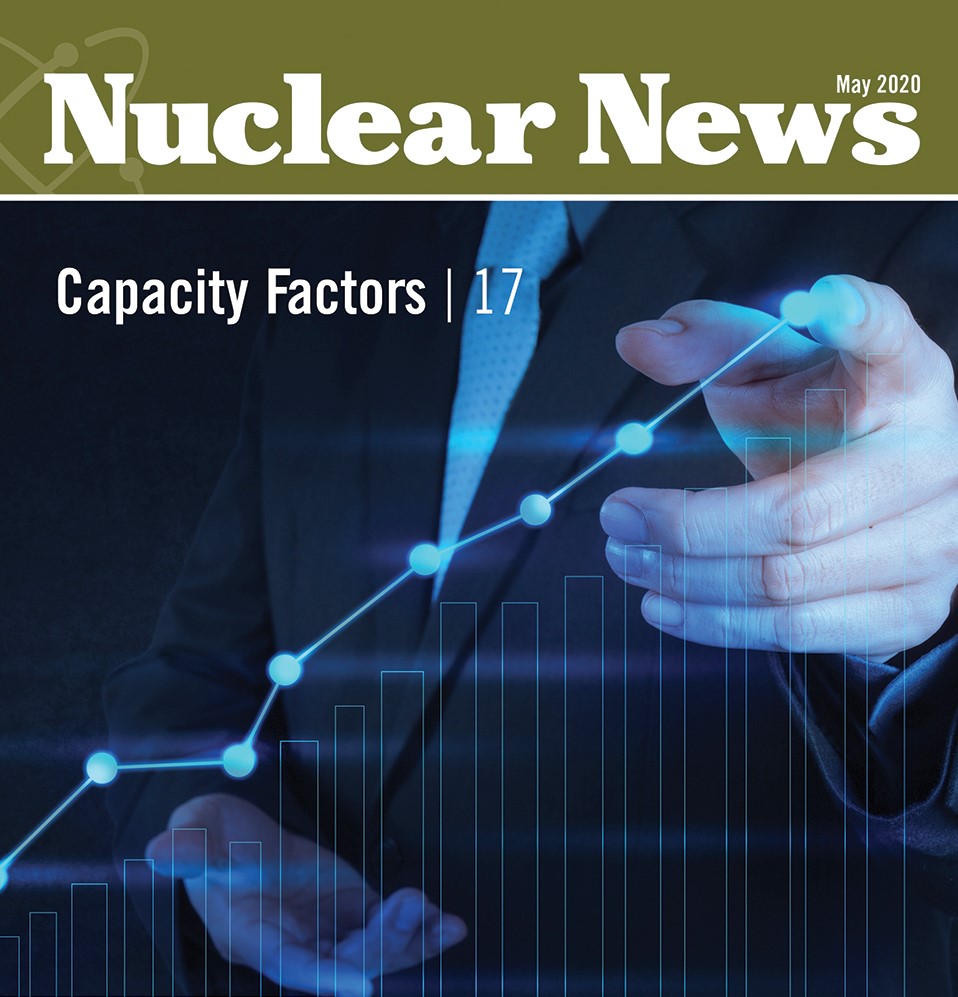Developing an RIPB design framework for external hazards

The American Nuclear Society’s Risk-informed, Performance-based Principles and Policy Committee (RP3C) held another presentation in its monthly Community of Practice (CoP) series on April 4.


The American Nuclear Society’s Risk-informed, Performance-based Principles and Policy Committee (RP3C) held another presentation in its monthly Community of Practice (CoP) series on April 4.
The Nuclear Regulatory Commission has issued a final rule and associated regulatory guide applying risk-informed, performance-based emergency preparedness (EP) requirements to small modular reactors and other new technologies (ONT).
Any method that can enhance safety, reduce risk, and lower costs is worth a second look. When that method proves it has the potential to optimize aging management at any nuclear power plant, it’s time to spread the word.
In 2019, a small team focused on selective leaching began looking for a way to use risk insights to optimize the implementation of deterministic aging management programs (AMPs). What they started soon grew into a large team effort by Constellation, Ameren, the Electric Power Research Institute (EPRI), and the Nuclear Energy Institute (NEI), along with contractors Enercon and Jensen Hughes, to develop a generic framework and then test it in two very different pilot applications.
The American Nuclear Society has recently published a new standard:
ANSI/ANS-30.3-2022, Light Water Reactor Risk-Informed, Performance-Based Design.
The standard is available for purchase from the ANS Store.
The Nuclear Regulatory Commission recently approved, in a 2–1 vote, a recommendation from its staff that could potentially lead to the siting of advanced reactors in more densely populated areas than is permitted for traditional light water units.
NRC chairman Christopher Hanson and David Wright voted in favor of the recommendation, with Jeffery Baran casting the lone “nay” vote. (There are currently two open seats on the five-member commission.)
ANS and the Breakthrough Institute yesterday submitted a letter to the Nuclear Regulatory Commission regarding the agency’s ongoing efforts to create a regulatory infrastructure for the development and commercialization of advanced reactors, a mandate of the Nuclear Energy Innovation and Modernization Act, signed into law in January 2019.
 The Nuclear Regulatory Commission yesterday unveiled its Strategic Plan: Fiscal Years 2022-2026, providing what it terms “a blueprint for how the agency will plan, implement, and monitor the work needed to ensure the safe and secure use of radioactive materials.”
The Nuclear Regulatory Commission yesterday unveiled its Strategic Plan: Fiscal Years 2022-2026, providing what it terms “a blueprint for how the agency will plan, implement, and monitor the work needed to ensure the safe and secure use of radioactive materials.”
According to the NRC, the four-year plan also includes a new focus on efforts to inspire stakeholder confidence and to continue fostering a healthy organization.
From the chairman: The 38-page document includes a message from the NRC chairman, Christopher Hanson: “In expanding the strategic plan to incorporate these areas of focus, I believe that this strategic plan will serve the agency better over the next four years by providing a clear roadmap that can be utilized in budget development and the agency’s ongoing implementation of the Foundations for Evidence-Based Policymaking Act of 2018."

Probabilistic risk assessments (PRAs) have advanced the safe operation of the U.S. reactor fleet over many decades. Risk insights from PRAs have provided information from many different perspectives, from what is most important to maintain at a facility to a better understanding of how to address new information regarding safety issues. The methods and tools that have supported the creation and enhancement of PRA models were established through multiple decades of research, starting with WASH-1400, The Reactor Safety Study,1 published in 1975, through the comprehensive plant-specific models in use today.

The ASME/ANS Joint Committee on Nuclear Risk Management (JCNRM) has achieved a significant milestone in the advancement of probabilistic risk assessment (PRA) technology. ANSI/ASME/ANS RA-S-1.4–2021 [1], Probabilistic Risk Assessment Standard for Advanced Non-Light Water Reactor Nuclear Power Plants, has been approved by the JCNRM, the ANS Standards Board, the ASME Board of Nuclear Codes and Standards, and the American Nuclear Standards Institute.

How the Nuclear Regulatory Commission collects information in the licensing of spent nuclear fuel can be improved by a better understanding of the concept of risk-informed decision making, according to a report, Audit of the NRC’s Use of Requests for Additional Information in Licensing Processes for Spent Nuclear Fuel (OIG-21-A-08), by the agency’s Office of Inspector General (OIG).
The Nuclear Regulatory Commission has opened registration for its annual Regulatory Information Conference (RIC), the largest public meeting the agency hosts. Scheduled for March 8–11, the 33rd RIC will be an all-virtual event.
The full conference program and registration information can be accessed from the RIC Web page.
Details: In addition to remarks from the NRC commissioners and the executive director of operations, RIC 2021 will feature two special plenary sessions, including one in recognition of the 10th anniversary of the Fukushima Daiichi accident, and 28 technical sessions covering a wide range of topics, such as advanced reactors, accident tolerant fuel, artificial intelligence, cybersecurity, microreactors, and risk-informed decision making.
The Nuclear Regulatory Commission is requesting public input on preliminary language for a proposed rule that would set out a risk-informed, technology-inclusive framework for the licensing and regulation of advanced nuclear reactors, according to a notice published in the November 6 Federal Register.
The Nuclear Energy Innovation and Modernization Act, or NEIMA, signed into law in January 2019, tasked the agency with developing a regulatory infrastructure for the development and commercialization of advanced reactors.
Risk-informed and performance-based approaches to nuclear safety have saved money and improved safety for current reactors and have the potential to offer even greater benefits for advanced reactors.
Since the 1980s, the nuclear power industry in the United States has worked to enhance the regulatory framework for nuclear facilities by making it more risk-informed and performance-based (RIPB). This has had some success in improving safety and reducing regulatory burden by focusing resources on the most risk--significant areas and allowing greater flexibility in choosing ways to achieve desired safety outcomes. However, there are further opportunities for the use of RIPB approaches in addressing current regulations and applying implementation tools, and in developing new RIPB regulations and advanced tools to further sharpen the focus on risk and performance outcomes.
 Nuclear power plant performance includes both operational and safety aspects and is an outcome of numerous elements, such as the reliability of equipment, reduction in challenges to plant operations, protection of workers, and proficiency of operations. These elements are inextricably linked to each other and to the safety of each facility. In short, a well-run plant is a safe plant for the workers and the public, and a well-run plant is an efficient plant. By-products of high performance include improved regulatory performance, worker safety, plant reliability, and, most important, public health and safety.
Nuclear power plant performance includes both operational and safety aspects and is an outcome of numerous elements, such as the reliability of equipment, reduction in challenges to plant operations, protection of workers, and proficiency of operations. These elements are inextricably linked to each other and to the safety of each facility. In short, a well-run plant is a safe plant for the workers and the public, and a well-run plant is an efficient plant. By-products of high performance include improved regulatory performance, worker safety, plant reliability, and, most important, public health and safety.